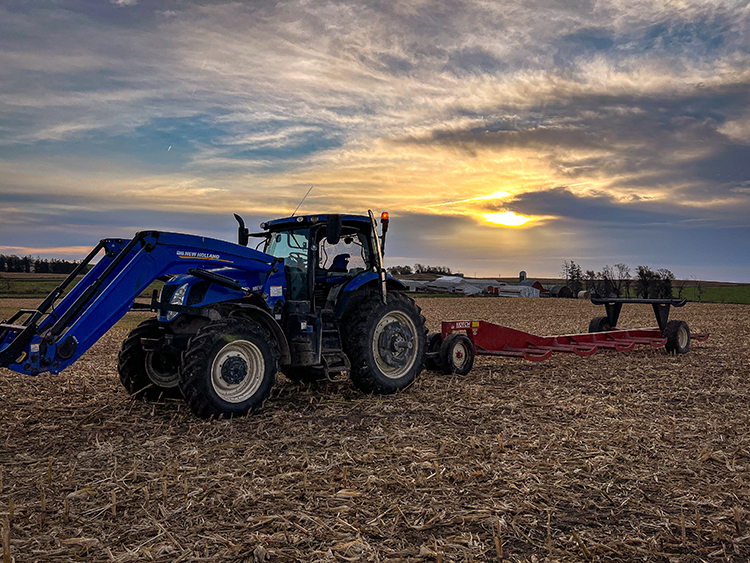
While I had planned to write about a different topic this week, I decided I had to share a comical moment from my day instead. I was busy hauling cornstalk bales from the field and stacking them into our sheds in anticipation of some much-needed and prayed-for rain. It’s always a bit chaotic to get all the different aspects of fieldwork done and timed right, so all our family members were focused on different tasks to keep equipment moving and get as much done as possible before we get rained out of the fields for the rest of the week.
As I rushed about the field loading up our round bale trailer with yet another load of cornstalk bales, my aunt (who farms nearby) pulled in to ask about borrowing a piece of equipment when I was done with it. The conversation that ensued from that simple question had me laughing after the fact because it contained such farmer-specific topics that anyone else would have surely been dumbfounded as to the passion and seriousness of our chat.
If someone were to eavesdrop on that discussion, they would have heard a detailed recount of the tedious nature of chopping and a detailed comparison of the amount of strength it takes to switch hydraulics on each and every tractor as we haul loads. They would have then listened in on a long-winded monologue from each of us (almost with the sentiment of a love letter) about what makes an ideal cornstalk bale.

Now, farmers, go along with me here. And, to any nonfarmers who happen to read this, just understand that the topic of what makes a good bale is truly one filled with passion and deep understanding among farmers needing those to bed their livestock. This is essentially a farmer’s way of “geeking out.” From the smoothness of peeling off the net wrap and the level at which the stalks are chopped to having a little dust kick up as it breaks and the ease of spreading it among cattle pens, there are so many elements that come together to make a truly ideal cornstalk bale. While those are just a few factors, the difference between a good and bad cornstalk bale is vast.
After our long visit chronicling the many attributes of a great bale, my aunt paused and said something to the effect of, “I thought I was the only one who had these thoughts.” My response? “Nope, not at all.” My husband and I have had comparable chats, and I would wager that we’re not the only farmers who could write a love letter to the perfect cornstalk bale (or a similarly farmer-specific topic of choice).

The author dairy farms with her parents and brother near Hawkeye, Iowa. The family milks approximately 300 head of grade Holstein cows at Windsor Valley Dairy LLC — split half and half between a double-eight parallel milking parlor and four robotic milking units. In the spring of 2020, Molly decided to take a leap and fully embrace her love for the industry by returning full time to her family’s dairy.










